Fleischmann’s Glass Frog males use songs to attract females to copulate and reproduce. In urban areas, anthropogenic noise and light may affect reproductive success, so males sing differently—in duration, frequency, and pitch—to adapt to the situation.
Obstacles in nature are quite variable. Some are easy to observe: for example, a tree in the middle of an open area, a rock in the middle of a trail, or a lake in the forest. Others are not that easy to spot or identify as an obstacle. For example, wind currents, river noise, natural light, ambient temperature, or small gaps in the middle of the forest. Those obstacles may limit animal distribution and movement. Small insects like ants may move around the tree in the middle of an open area to pass from the nest to their feeding area. Tropical birds inside the forest will avoid moving through the forest gap or human trails. Wind currents, on the other hand, may limit the places flying insects can reach, because heavy wind currents push insects in opposite directions. Finally, ambient temperature limits the species distribution, due in part to the temperature tolerance that each species has.
Interestingly, in present days, animals not only need to deal with natural obstacles, but they also need to deal with artificial obstacles created by humans, many inside urban areas, but not limited to habitats like dams, roads, buildings, or windmills. Water dams are a huge obstacle for migratory fishes (e.g., salmon) to move along the riverbed. Highways and even small roads limit rodents, salamanders, and arthropods to move between both sides of the road. Natural or artificial obstacles not only limit animal distribution and movement between habitats, they also limit communication and as a consequence reproduction, territory defense, or social communication (e.g., food or danger advertisement).
Probably the communication most affected by natural and artificial obstacles is acoustic communication (animals’ songs and calls), because is a long-distance signal that attenuates and degrades when it hits different surfaces, travels throughout the wind currents, finds different temperature layers, or competes with other acoustic signals like other animal sounds or artificial sounds produced by humans (e.g., music, automobile motors, and factories). This will limit acoustic communication between individuals of the same species or between species. Therefore, many investigators around the world have invested the last 20 years in understanding the effect of anthropogenic noise and urban development on animals’ acoustic communication, including birds, mammals, insects, fishes, and amphibians. The amphibians (frogs and toads) are probably the less studied group in terms of the effect of anthropogenic noise on acoustic communication, especially inside tropical areas, because they are nocturnal, inhabit inside wet areas, and are not easy to spot.
Recently, biologists started to pay attention to another obstacle for acoustic communication, which at first sight does not look like an obstacle: night light pollution. How is night light pollution an obstacle to acoustic communication? Well, nocturnal animals like frogs, toads, crickets, or owls, avoid sites with a lot of lights at night to vocalize. Consequently, some places inside urban areas are losing populations of the night-singing species and the isolation makes the distance between individuals bigger, reducing reproduction chances. Additionally, animal species that vocalize during the day increase the vocalizing hours at night (they keep vocalizing during the night or vocalizing early in the mornings). This increases the number of sounds that occur at night and competes with the vocalizations of nocturnal species to reach potential receivers. For these reasons, night light pollution has been an obstacle to acoustic communication in nocturnal animals.
With all previous information in mind, we want to know what happens with the singing behavior and song characteristics of small frogs in urban tropical areas, when they deal with anthropogenic noise (mainly motors from cars) and night light pollution together. Do they move far from the noise and light-polluted areas? Do they stop vocalizing when the noise is higher? Is noise not important but they sing less in sites with higher night light pollution?
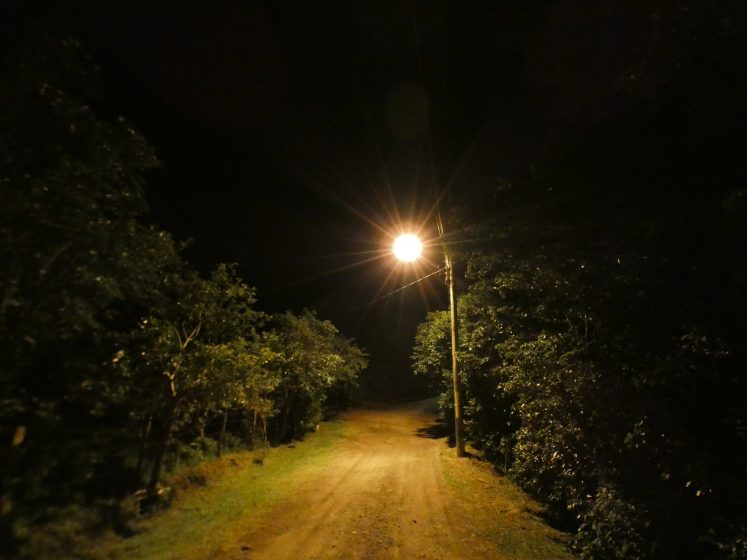
So, this set of questions is what we investigated in recent years using the Fleischmann’s Glass Frog (Hyalinobatrachium fleischmanni) males that inhabit urban and rural areas in the Costa Rican Central Valley, the most populated and urbanized area in the country. This glass frog inhabits creeks inside urban areas, next to bridges and roads with higher levels of anthropogenic noise and night light pollution. Fleischmann’s Glass Frog males use songs to attract females to copulate and reproduce. Therefore, if light and noise affect their singing behavior, the populations that inhabit urban areas are going to have serious trouble surviving and keeping stable populations in the future.
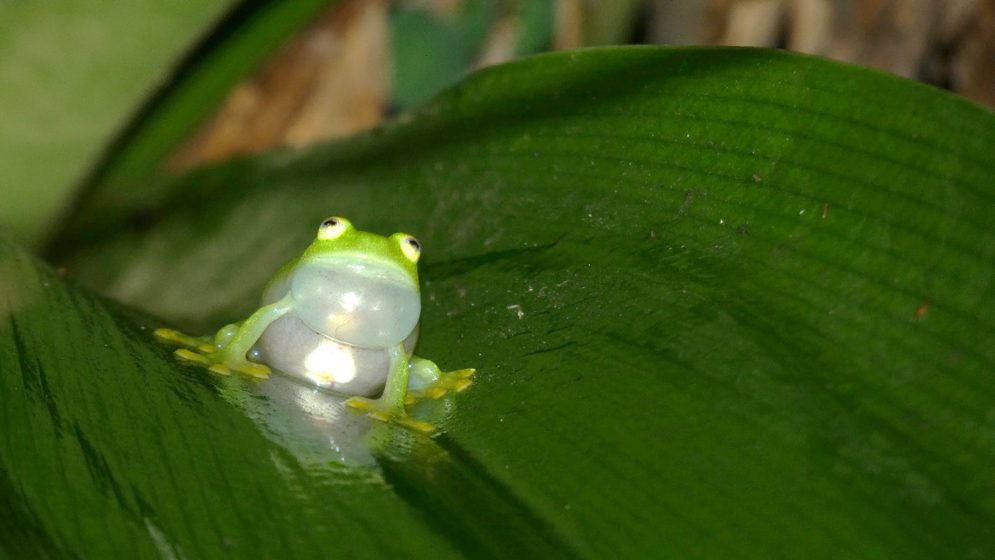
The small Fleischmann’s Glass Frog males have two strategies to increase their probability of attracting a female with their songs inside urban noisier sites. First, males sing longer songs and wait more time between songs on urban sites, compared to males who live in rural areas with less noise. Second, males sing songs with higher frequencies in urban sites. Increase the song duration also increases the probability that part of the song reaches the potential female because higher noise levels are not constant over time. To wait more time before singing the next song is similar to being next to a busy avenue talking with someone else, and the talker stops to talk when a noisier car or motorcycle passes by, increasing the time between words, but allowing communication. Finally, the frequency increase is a very common response in animals (including humans) when there is a lot of noise and they need to vocalize to communicate. For example, when we are at a party with a lot of people and music, we need to increase our voice volume a little bit to be hearing for the others, the increase in voice volume also increases the frequency of our regular voice. This increase in voice frequencies is similar to the song frequency increase displayed by urban male frogs to communicate in noisier sites.
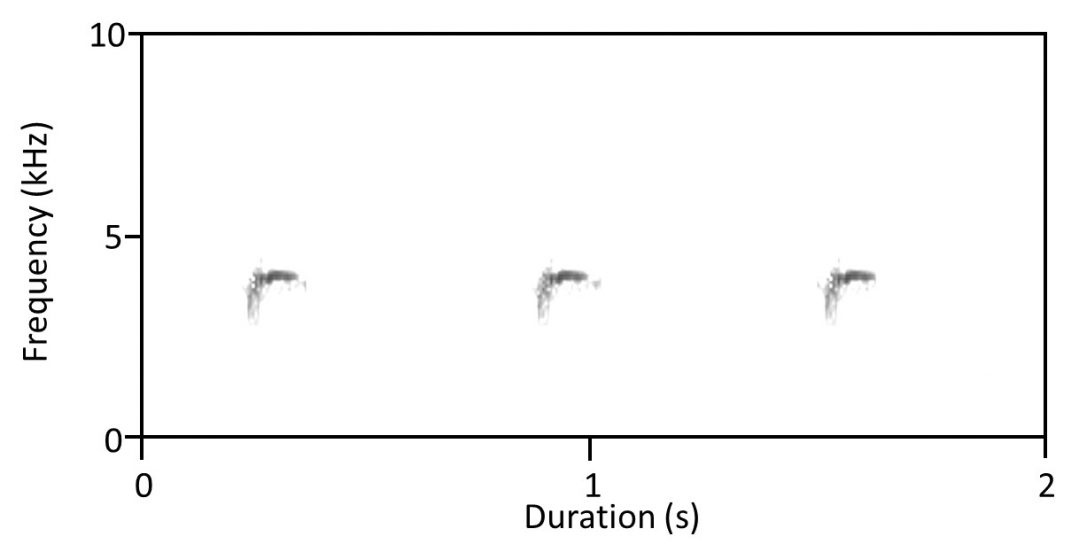
We also found that anthropogenic noise has an effect not only on song structure but also on the singing activity patterns of the Fleishmann’s Glass Frog. The males of this frog (and possibly other species too) can respond differently to different sources of noise, at different times of the night, which can also be related to mating status, female availability, and energy levels in males. Because, late at night, independent of noise levels, males sing a lot, probably because it is the last chance they have to attract a female to reproduce that night.
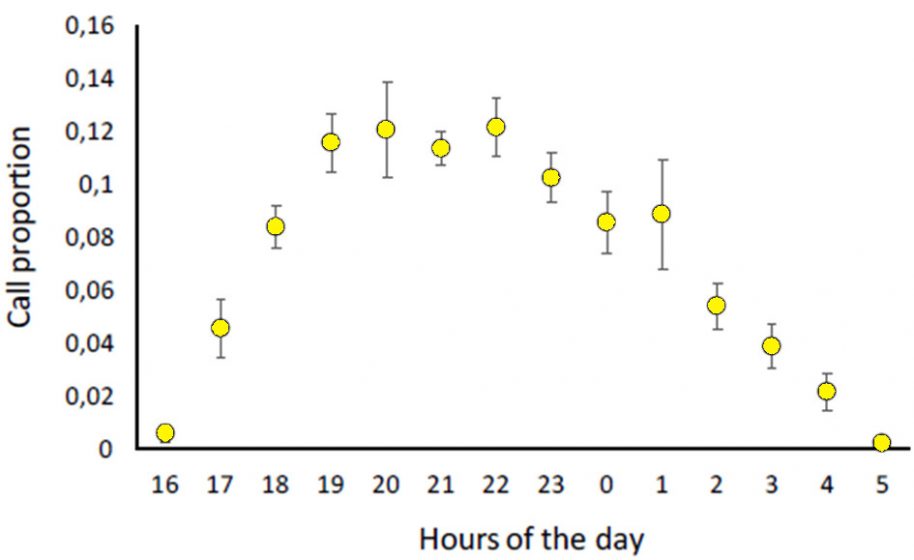
On the other hand, night light pollution apparently is not affecting the singing behavior of Fleischmann’s Glass Frog males. Mmales in very illuminated sites started and finished singing at the same time that males did in darker sites. Frog males also sing with a similar quantity of songs per hour during all night in illuminated and darker sites.
In conclusion and to answer our title question, Fleishmann’s Glass Frog males did not want anthropogenic noise when they sing, but artificial light apparently did not affect their singing behavior.
There is still a lot that is not known about the effects of anthropogenic pollutants on the survival, reproduction, and communication of small nocturnal animals like amphibians, crickets, spiders, or rodents, especially in areas that are much less studied like the tropics. Also, anthropogenic pollutants can interact between them and produce combined effects on animals. Therefore, studying them together becomes important to better understand the overall effect humans and urbanization have on wildlife inside and outside the cities.
about the writer
Luis Sandoval
Luis Sandoval is a researcher and professor at Escuela de Biología, Universidad de Costa Rica. His research focuses on urban ecology, animal communication, and behavior and natural history of birds.
Ana-Cecilia Gutiérrez-Vannucchi and Luis Sandoval
San José


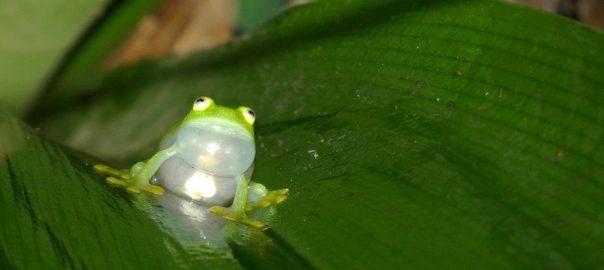




Leave a Reply